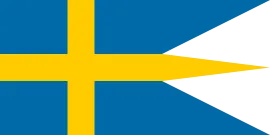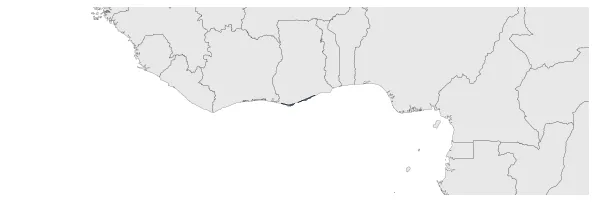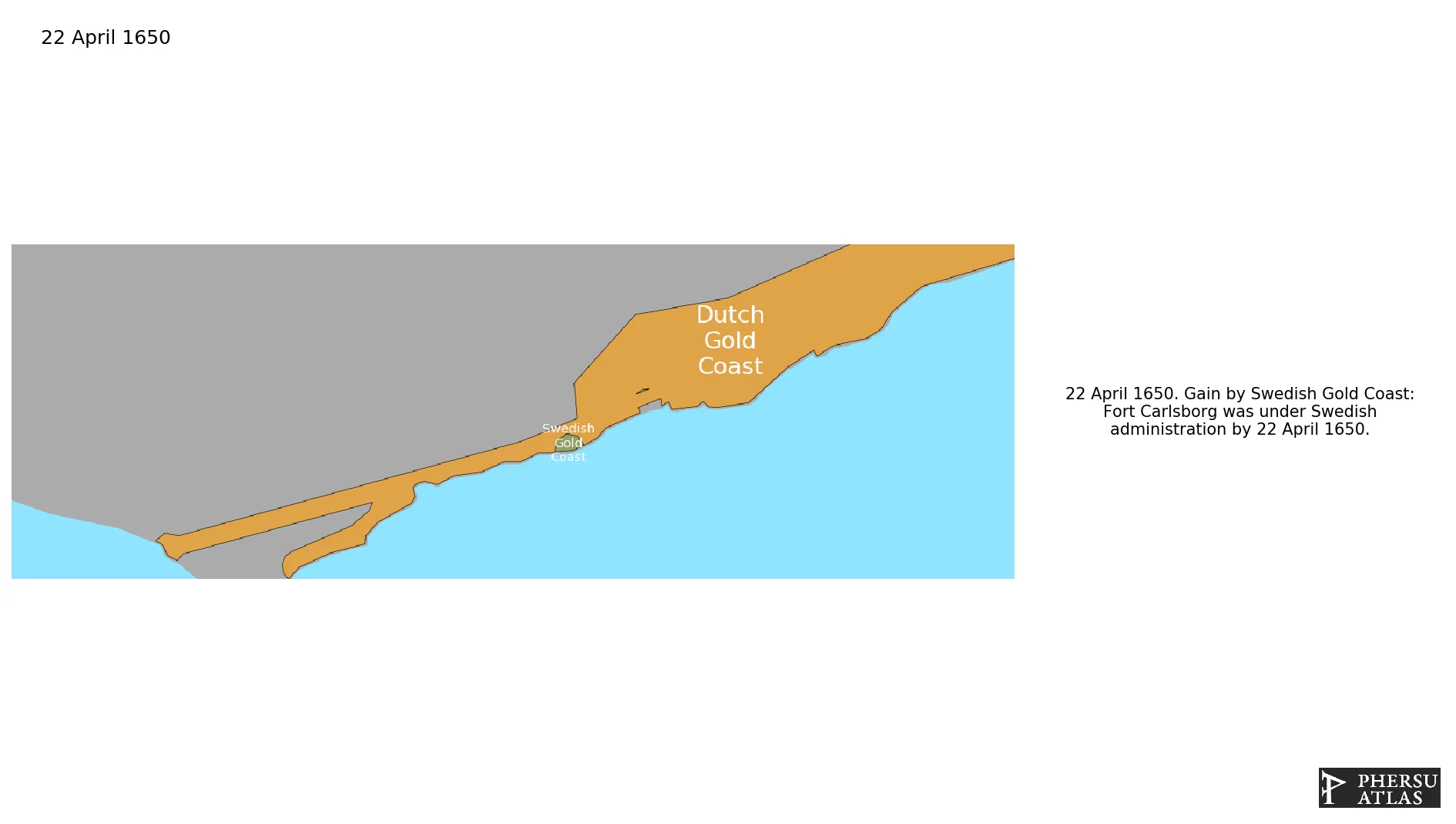 Swedish Gold Coast
Swedish Gold Coast
If you are looking for the page with the statistics about this polity you can find it here:All Statistics
Were the colonial possessions of Sweden in the Gold Coast (Ghana).
Establishment
April 1650: Fort Carlsborg was under Swedish administration by 22 April 1650.
Chronology
Interactive Chronologies with maps are available in the section Changes Navigation
A series of wars fought in northern and northeastern Europe from the 16th to the 18th century.
1.1.Second Northern War
Was a war between the Polish-Lithuanian Commonwealth and Sweden (along with their respective allies) over the hegemony in the Baltic Sea.
May 1660: After the Treaty of Copenhagen in 1660 Cabo Corso Castle was to be returned to Swedish administration.
January 1651: Fort Batenstein, located in present-day Butri near Sekondi-Takoradi in the Western region, was a fortification under Swedish administration from 1650 to 1656. It was an important trading post on the Swedish Gold Coast during this period.
January 1653: Fort Christiansborg, located in present-day Osu, Ghana, was under the administration of the Swedish Gold Coast from 1652 to 1658. The fort was a key trading post for the Swedish Empire during this period.
January 1654: In 1653, the Swedes captured Fort William.
January 1654: Fort Witsen, now Sekondi-Takoradi in the Western region, was under the control of the Swedish Gold Coast from 1653 to 1658. The fort was named after Dutch merchant Jacob Witsen, who played a significant role in the establishment of the trading post.
January 1656: Fort Apollonia was established by the Swedes in 1655 as part of the Swedish Gold Coast, a colony in present-day Ghana. The trading post was strategically located for the Swedish to engage in the lucrative trade of gold and other commodities in the region.
August 1656: After the Dutch managed to dislodge the Swedes from Butre and began building Fort Batenstein at that site, the leaders of the Dutch West India Company thought it beneficial to negotiate a treaty with the local political leadership in order to establish a peaceful long-term relationship in the area. The local Ahanta leaders found it equally beneficial to enter into such an agreement, and thus on 27 August 1656, the Treaty of Butre was signed. This treaty established a Dutch protectorate in the area.
January 1658: In 1657, Danish forces took the lodge under Caerloff.
March 1658: Fort Carlsborg was seized and made part of the Danish Gold Coast colony.
January 1659: In 1658, Fort Christiansborg in present-day Osu, Ghana, was transferred from Swedish to Dutch control.
April 1663: The whole Swedish Gold Coast was seized by Denmark, and integrated in the Danish Gold Coast.
Disestablishment
April 1663: The whole Swedish Gold Coast was seized by Denmark, and integrated in the Danish Gold Coast.


 Swedish Gold Coast
Swedish Gold Coast




























